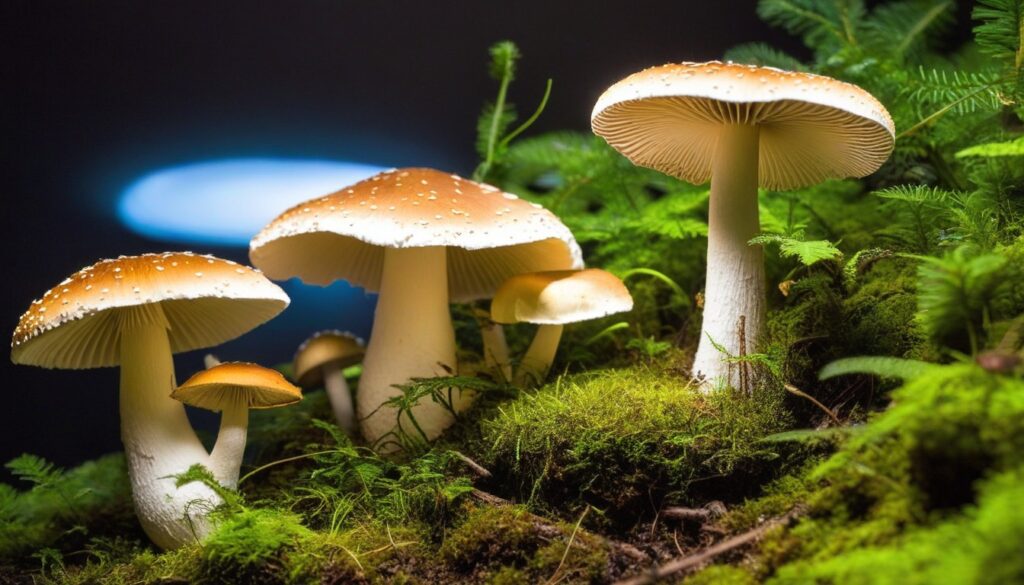When it comes to growing mushrooms, one of the most critical factors that can determine your success is the lighting. Like all plants, mushrooms require light to survive and thrive. However, the intensity, duration, and spectrum of the light can have a significant impact on the growth and yield of your mushrooms. Finding the right light for growing mushrooms at home may seem overwhelming, but with the right information and guidance, it is achievable.
The perfect light for growing mushrooms will enhance growth and yield, while also ensuring that the mushrooms are healthy and of high quality. Understanding the specific light requirements of mushrooms is critical in finding the right lighting solution for your cultivation. In this article, we will explore the various aspects of mushroom lighting, including the type of light, spectrum, and duration. We will also provide tips on setting up a mushroom lighting system and avoiding common lighting mistakes.
Key Takeaways:
- Mushrooms require light for growth and yield.
- Light intensity, duration, and spectrum are critical factors for successful mushroom cultivation.
- Understanding the specific light requirements of mushrooms is crucial in finding the right lighting solution.
- Choosing the right artificial light source and setting up a proper lighting system is essential.
- Regular maintenance and troubleshooting of mushroom lights can prevent common lighting mistakes.
Understanding the Light Needs of Mushrooms
When it comes to mushroom cultivation, lighting is a crucial factor in achieving success. Understanding the light needs of mushrooms is essential for healthy growth and optimal yield. Let’s explore the factors that affect mushroom’s light requirements.
The Optimal Light Spectrum for Mushrooms
Mushrooms require a specific light spectrum for proper growth and development. The blue and red portions of the spectrum are most effective in stimulating mushroom growth. Blue light promotes vegetative growth, while red light is essential for fruiting body formation. A combination of both blue and red light is ideal for all stages of mushroom growth.
The Right Light Intensity and Duration for Mushrooms
Aside from the light spectrum, the intensity and duration of light exposure also play a critical role in mushroom growth. The intensity of light needed for mushrooms is generally low, around 500-1000 lux or 50-100 µmol/m²/s. Mushroom cultivation requires low light levels as high intensities can lead to stunted fruiting body growth. The duration of light exposure required for mushroom growth is generally 8-12 hours per day.
The Impact of Light Temperature and Humidity
Light temperature and humidity can also affect mushroom growth. The ideal temperature for mushrooms is around 60-75°F (15-24°C). Higher or lower temperatures can result in poor growth or even contamination. Humidity levels for mushroom cultivation should be kept high, around 80-90%, as mushrooms require a moist environment for healthy growth.
Understanding the light needs of mushrooms is key to successful cultivation. With the ideal light spectrum, intensity, duration, temperature, and humidity, mushrooms can grow healthily and produce a bountiful yield.
Natural Light vs. Artificial Light for Mushroom Cultivation
When it comes to providing light for mushrooms, growers have two options: natural light or artificial light. Both options have their advantages and disadvantages, so it’s essential to understand the differences and choose the best choice for successful cultivation.
The Pros and Cons of Natural Light for Mushrooms
Natural light is a straightforward and cost-effective option for growing mushrooms. It provides a full spectrum of light that can enhance mushroom growth, while also allowing for proper humidity and air circulation.
However, natural light has its downsides. Mushrooms grown outdoors are susceptible to contamination from bacteria, insects, and other pests. The weather may also affect mushroom growth, causing delays or uneven maturity.
The Advantages and Disadvantages of Artificial Light for Mushrooms
Artificial light can provide growers with more control over lighting conditions and eliminate the risks that come with outdoor cultivation. It also allows for year-round mushroom growth and may increase yield when used correctly.
On the downside, artificial light can be costly to set up and maintain. It requires a consistent power source, and depending on the type of light used, it may produce excess heat or require proper ventilation.
Which is Better for Mushroom Cultivation: Natural or Artificial Light?
The answer depends on the grower’s specific needs and preference. If growing mushrooms outdoors in a suitable climate, natural light can be a viable choice. However, for growers looking for more control over lighting conditions and consistent results, artificial light can be a game-changer.
Some growers even combine natural and artificial light sources to achieve optimal results. For example, natural light can be supplemented with artificial light to provide a more consistent light spectrum throughout the day.
Ultimately, the decision to use natural or artificial light for mushroom cultivation lies with the grower. With careful consideration and experimentation, growers can find the perfect lighting solution for their needs and enhance their mushroom growth successfully.
Choosing the Right Artificial Light Source
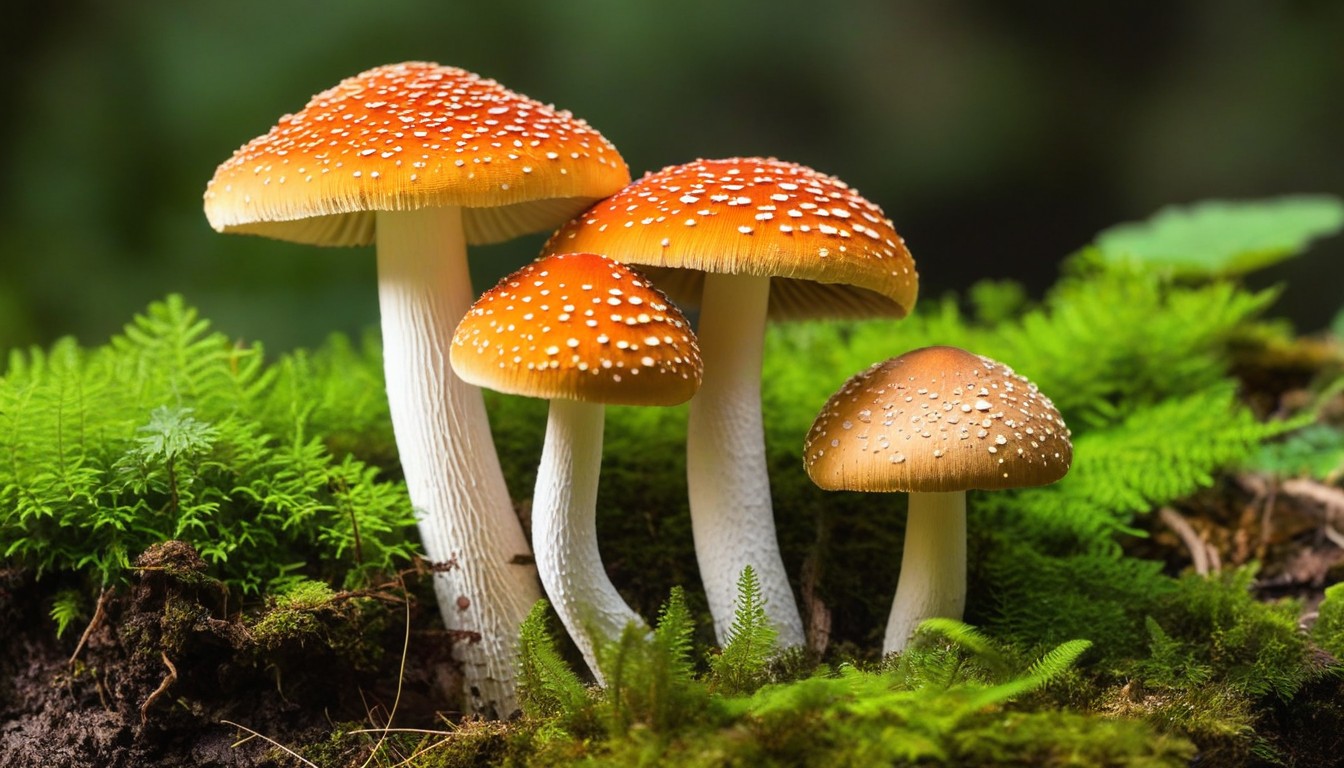
When it comes to choosing the perfect light source for your mushroom cultivation, there are several options to consider. Each type of light offers different benefits and drawbacks, so selecting the most appropriate one is key. Here are some factors to keep in mind:
LED Lights
LED lights are a popular choice among growers due to their energy efficiency and long lifespan. They emit a full spectrum of light suitable for mushroom growth and can be adjusted to specific wavelengths. However, they can be expensive upfront and may require additional equipment for optimal performance.
Fluorescent Lights
Fluorescent lights are another commonly used option for mushroom cultivation. They are cost-effective, emit a spectrum of light suitable for mushroom growth, and don’t produce as much heat as other lighting sources. However, they may need to be replaced more frequently than other lights, and they can be less energy-efficient.
Incandescent Lights
While incandescent lights are not the most efficient lighting option, they can be useful for supplementing other light sources. They emit a warm, reddish light that can promote mushroom growth, but they also produce a lot of heat, which may require additional cooling measures.
Halogen Lights
Halogen lights can be effective for mushroom growth, but they emit a lot of heat and use a lot of energy. They also need to be placed farther from the mushrooms to prevent burning or overheating. If used, they should be accompanied by additional cooling and ventilation systems.
Choosing the Right Light Source for Your Needs
The ideal light source for your mushroom cultivation will depend on various factors, such as the size of your grow space, the number of mushrooms you plan to cultivate, and your budget. Consider the optimal light spectrum, intensity, and duration necessary for healthy mushroom growth, and choose the light source that best meets those needs.
Tip: It’s always a good idea to invest in high-quality lighting equipment to ensure the best possible results. Choosing a cheap and low-quality light source can lead to poor mushroom growth and ultimately result in disappointment.
Understanding Light Spectrum for Mushroom Growth
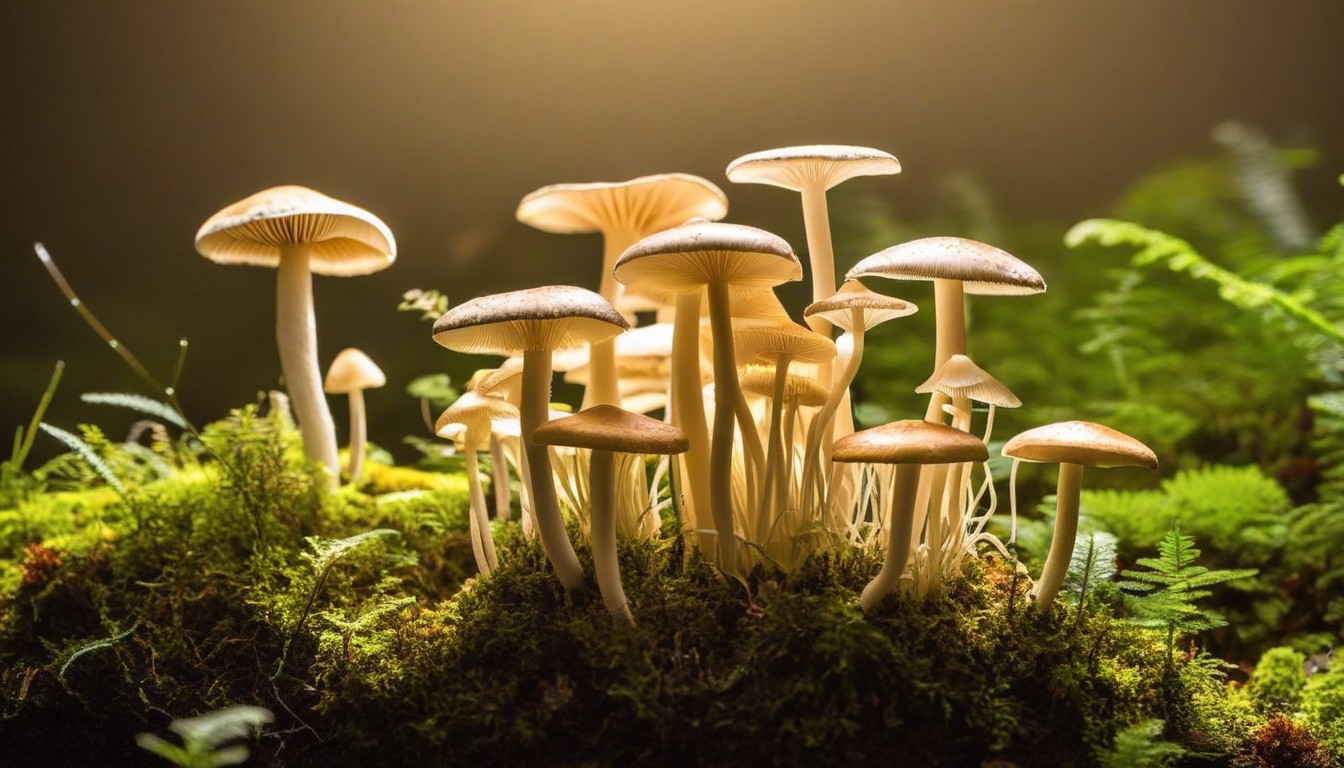
Light spectrum plays a crucial role in the growth and development of mushrooms. Different wavelengths and colors of light have varying impacts on mushroom growth, and it is essential to understand how to adjust the light spectrum according to the stage of cultivation.
The Impact of Light Spectrum on Mushroom Growth
The blue light spectrum is essential for the vegetative growth phase of mushrooms. It enhances stem elongation and promotes the production of robust mycelium. Green light impacts the formation of mushroom primordia, providing a structural foundation for developing fruit bodies. Meanwhile, the red light spectrum stimulates the maturation and ripening of the mushrooms, leading to optimal yield.
It is vital to maintain a consistent light spectrum for your mushroom cultivation, as fluctuations can negatively impact growth. Using LED grow lights that provide adjustable spectrums can enable growers to fine-tune the light spectrum and promote healthy mushroom development.
Adjusting Light Spectrum for Different Cultivation Stages
During the vegetative growth stage of mushrooms, blue light should be the dominant spectrum. This stage is essential for the development of healthy mycelium, which is the foundation for a robust fruiting body. As the mushrooms begin to form primordia, a balance between blue and green light should be maintained to support optimal formation.
Once the fruiting bodies have formed, red light should be emphasized to encourage maturation and ripening, leading to a higher yield. Some growers even manipulate light spectrum to induce fruiting, resulting in a more abundant harvest.
Using Spectrum-Adjustable Grow Lights
When selecting grow lights for your mushroom cultivation, consider investing in LED lights that offer customizable spectrum adjustments. These lights provide greater flexibility in adjusting the light spectrum according to the stages of growth and type of mushrooms being grown.
Adjustable spectrum LED lights also tend to be more energy-efficient and have longer life spans, making them a cost-effective and eco-friendly choice for mushroom growers.
Setting Up a Mushroom Lighting System
Creating the perfect mushroom lighting system isn’t as complicated as it may seem. With the right equipment and some basic knowledge, anyone can set up an efficient lighting system for their mushroom cultivation. Here are some important steps to follow:
1. Choose the Right Lighting Equipment
Before you start, make sure you have the right lighting equipment. Select a high-quality grow light that emits the proper spectrum of light needed for mushroom growth. LED grow lights are the most popular choice for mushroom cultivation, as they are efficient and long-lasting.
2. Position the Lights Correctly
Place the grow lights above the mushrooms, providing a uniform light distribution. Position the lights at a distance that allows for adequate light coverage without overheating the mushrooms. As a general rule of thumb, keep the grow light 6 to 12 inches away from the top of the mushrooms.
3. Use a Timer
Set a timer for your grow lights that matches your mushroom’s lighting requirements. Most mushrooms require 12-16 hours of light per day, so make sure your timer is programmed accordingly. Using a timer ensures a consistent light cycle, which is critical for optimal growth.
4. Monitor and Adjust Light Intensity
Check your mushroom’s growth regularly and adjust the lighting intensity as needed. If mushrooms are becoming too tall and spindly, increase the light intensity. If mushrooms are becoming too short and stunted, decrease the light intensity.
|
Tip: |
Keep a record of any adjustments you make to your lighting system to ensure accurate monitoring and consistency. |
|---|
5. Consider Adding Supplementary Light
In some cases, natural light may not be enough to ensure optimal mushroom growth. Consider supplementing your artificial light with natural light by placing your mushroom grow box near a window. This will provide your mushrooms with a combination of both natural and artificial light, resulting in better growth.
6. Don’t Overdo It
While lighting is essential for growing mushrooms, too much light can be harmful. Overexposure to light can cause mushrooms to dry out and become brittle or even die. Monitor the temperature in your growing space to ensure that your mushrooms are not overheating due to excessive light exposure.
By following these simple steps, you can create an effective lighting system that will enhance your mushroom cultivation success. Remember to monitor your lighting conditions regularly and make adjustments as needed to achieve optimal growth.
Maintaining the Ideal Light Conditions
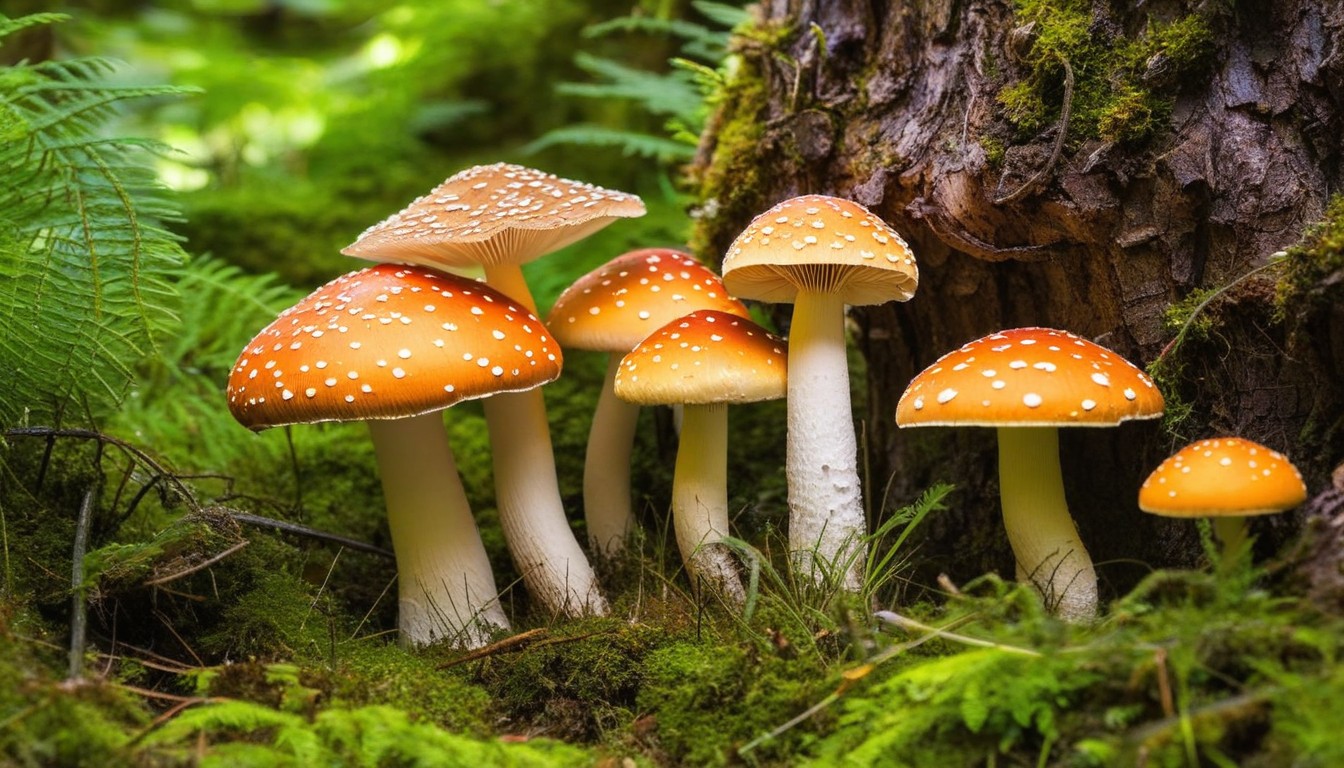
Now that you’ve set up your mushroom lighting system, it’s important to maintain the ideal light conditions to ensure successful cultivation. Maintaining light conditions for mushrooms involves monitoring the light duration, intensity adjustments, and monitoring for any light-related issues.
One of the most critical factors in mushroom cultivation is the duration of light exposure. Different types of mushrooms require different durations of light exposure to achieve optimal growth. For instance, oyster mushrooms require 12 hours of light daily, while shiitake mushrooms may only require six hours of light daily. Check the specific light duration requirement for your mushroom strain and adjust accordingly.
Aside from duration, light intensity is equally important. The intensity should be adjusted according to the growth stage of the mushroom. During the initial stages, the light intensity should be low and gradually increased as the mushroom grows. If the intensity is too high, it can cause the mushrooms to dry out and become stunted. Proximity to the light source can also impact intensity, so make sure to maintain the appropriate distance between the mushrooms and the light source.
Keep an eye out for any light-related issues, such as overheating or insufficient light levels. Overheating can cause the mushrooms to dry out and die, while insufficient light levels can cause stunted growth or a lack of fruiting bodies. Regularly check the temperature and humidity levels to ensure that they are within the optimal range for your mushroom strain.
Maintaining the ideal light conditions is a crucial aspect of mushroom cultivation. By ensuring the correct light duration, intensity, and monitoring for light-related issues, you can achieve successful mushroom growth and maximize your yield.
Common Lighting Mistakes to Avoid
Proper lighting is essential for successful mushroom cultivation, but it’s easy to make mistakes that can affect your results. Here are some of the most common lighting mistakes in mushroom cultivation and how to avoid them:
Overexposure to Light
One of the most common mistakes is exposing mushrooms to too much light. While light is necessary for growth, excess exposure can lead to stunted growth or even death.
To avoid this, ensure that your light source is positioned at the correct distance from your mushrooms. It’s best to follow the manufacturer’s instructions or seek advice from experienced growers. Be sure to monitor your mushrooms for any signs of light burn or damage.
Insufficient Light
On the other hand, insufficient light can also limit mushroom growth and yield. If you notice your mushrooms elongating or stretching towards the light source, it is a sign that they are not getting enough light.
Ensure that your light source provides sufficient intensity and duration, according to the specific needs of your mushroom species. Consider investing in a timer to maintain consistent lighting conditions.
Wrong Spectrum of Light
Another common mistake is using the wrong spectrum of light. Different mushroom species have varying light requirements, and using the wrong spectrum can hinder growth and produce poor yield.
Research the specific light spectrum required for your mushroom species and choose the light source that provides the correct wavelength and color. Read the manufacturer’s specifications and seek advice if needed.
Improper Light Maintenance
Maintaining your lights is crucial to ensure their longevity and effectiveness. Failing to do so can lead to malfunctions and poor performance.
Regularly clean your light fixtures and replace any burnt-out bulbs. Check for loose connections or wiring and repair or replace them if necessary. A well-maintained light source will provide consistent and optimal light conditions for your mushrooms.
Insufficient Monitoring
Finally, one of the biggest lighting mistakes is failing to monitor your mushroom’s growth and respond to any issues promptly.
Regularly inspect your mushrooms for any signs of light-related problems, such as discoloration or stunted growth. Respond quickly by adjusting the lighting conditions or seeking advice if needed.
By avoiding these common lighting mistakes in mushroom cultivation, you can ensure optimal growth and yield for your mushrooms. Remember to pay close attention to your lighting system and make adjustments as needed to create the perfect growing environment.
Supplementing Natural Light with Artificial Light
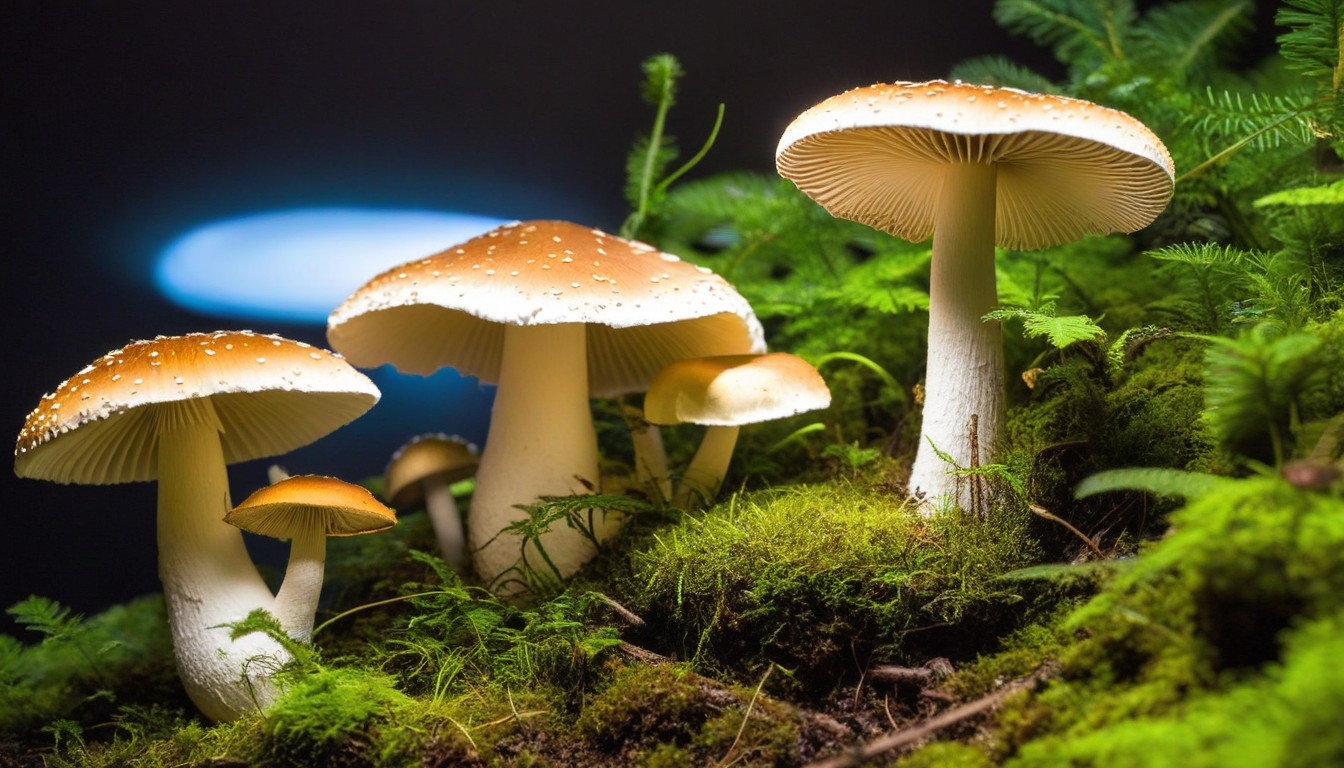
If you are growing mushrooms indoors, it can be challenging to provide enough natural light to meet their needs. Supplementing natural light with artificial light is an excellent solution to ensure consistent and adequate lighting for your mushrooms throughout their growth stages.
Combining natural and artificial light can provide the best of both worlds, allowing you to take advantage of natural light when available and supplementing with artificial light when necessary.
The Benefits of Supplementing Natural Light with Artificial Light
Supplementing natural light with artificial light can benefit your mushroom cultivation in several ways:
- Consistent and adequate lighting: Artificial light can provide consistent and adequate light for your mushrooms, ensuring they receive the optimal amount of light each day.
- Extended lighting hours: In areas with low natural light, supplementing with artificial light can provide extended lighting hours, giving your mushrooms more time to photosynthesize and grow.
- Control over the light spectrum: Artificial light allows you to have more control over the light spectrum, ensuring that your mushrooms receive the optimal wavelength and color for their growth stage.
Types of Artificial Light to Supplement Natural Light
There are several types of artificial light that you can use to supplement natural light for your mushrooms, including:
|
Type of Artificial Light |
Pros |
Cons |
|---|---|---|
|
LEDs |
– Energy-efficient – Long-lasting – Adjustable light spectrum |
– High upfront cost – May need multiple fixtures for large grow areas |
|
Fluorescent lights |
– Energy-efficient – Low heat output – Wide availability |
– Not as long-lasting as LEDs – Limited adjustability of the light spectrum |
|
Incandescent lights |
– Low upfront cost – Can produce heat if needed |
– High energy consumption – Short lifespan |
LEDs are a popular choice for mushroom growers because of their energy efficiency and adjustable light spectrum. However, they can be expensive upfront, so fluorescent lights may be a better option for those on a budget.
Integrating Natural and Artificial Light Effectively
When supplementing natural light with artificial light, it’s essential to integrate both light sources effectively to provide your mushrooms with optimal growing conditions. Here are some tips to ensure effective integration:
- Position artificial lights to supplement natural light: Place your artificial lights where they can supplement natural light and provide consistent lighting throughout the grow area.
- Adjust artificial light intensity: Adjust the intensity of your artificial lights to match the available natural light, ensuring your mushrooms receive the optimal amount of light for their growth stage.
- Monitor your light duration: Be mindful of the light duration and avoid exposing your mushrooms to too much light, which can inhibit growth and fruiting.
By supplementing natural light with artificial light, you can ensure your mushrooms receive consistent, adequate lighting that promotes optimal growth and fruiting. Experiment with different types of artificial light and light integration techniques to discover what works best for your specific mushroom growing setup.
Advanced Lighting Techniques for Maximum Yield
If you’re looking to take your mushroom cultivation to the next level, advanced lighting techniques can help you maximize your yield. Here are some strategies to consider:
1. Light Cycles
Controlling the light cycle is essential for successful mushroom cultivation. By adjusting the amount and duration of light exposure, you can stimulate fruiting and increase the yield. For example, you can simulate natural light cycles by providing 12 hours of light and 12 hours of darkness to stimulate the fruiting process.
2. Light Manipulation
Manipulating light intensity and spectrum can also influence mushroom growth and yield. For instance, blue light can promote vegetative growth, while red light can stimulate the fruiting process. By combining different light colors, you can create a custom spectrum that maximizes mushroom growth and yield.
3. Light-Induced Fruiting
Light-induced fruiting is a technique that involves exposing mushroom mycelium to a short burst of high-intensity light to initiate pinning. This technique can help you achieve faster fruiting and higher yields.
4. Multiple Flushes
The multiple flush technique involves exposing the mushrooms to a full spectrum of light for a short period after harvesting to trigger another fruiting cycle. By repeating this process, you can achieve multiple flushes from a single substrate, increasing your mushroom yield.
5. Light Recipes
There are various light recipes available that can help you achieve maximum yield. These recipes involve manipulating the light spectrum and intensity throughout the cultivation process to optimize mushroom growth and yield.
|
Light Recipe |
Benefits |
|---|---|
|
Blue Spectrum |
Encourages vegetative growth |
|
Full Spectrum |
Maximizes yield and quality |
|
Red Spectrum |
Stimulates the fruiting process |
By experimenting with different techniques and recipes, you can find the perfect lighting strategy for your mushroom cultivation needs. Keep in mind that lighting is just one factor among many that contribute to successful mushroom cultivation. By combining proper lighting with other essential elements such as substrate, temperature, and humidity, you can achieve maximum yield and high-quality mushrooms every time.
Tips for Mushroom Light Maintenance and Troubleshooting
Proper light maintenance is essential for successful mushroom cultivation. Here are some tips for maintaining your mushroom lights and troubleshooting any problems that may arise.
Keep Your Lights Clean
Over time, dust and debris can build up on your lights, reducing their effectiveness. It’s essential to clean your lights regularly to ensure they’re providing optimal light for your mushrooms. Use a soft cloth or a gentle cleaner to wipe down your lights, being careful not to damage the bulbs or fixtures.
Monitor Your Light Intensity
Different stages of mushroom growth require different levels of light intensity. It’s important to monitor your light intensity throughout the cultivation process and adjust it as needed. Insufficient light can lead to slow growth, while too much light can damage or even kill your mushrooms.
Check Your Light Positioning
Proper light placement is crucial for ensuring your mushrooms receive adequate light. Be sure to position your lights at the appropriate distance and angle for optimal coverage. If your mushrooms are receiving inconsistent light, adjust the positioning of your lights to ensure even coverage.
Use Timers to Control Light Duration
Setting up timers is a great way to ensure consistent light duration for your mushrooms. Different types of mushrooms require different amounts of light, so be sure to research the specific needs of your variety. Consistent light duration is essential for healthy growth, so avoid significant fluctuations in your lighting schedule.
Troubleshooting Light Problems
If you notice any issues with your mushroom lights, it’s crucial to address them promptly to avoid damaging your crop. Common problems include flickering lights, burnt-out bulbs, and uneven light coverage. Try replacing bulbs, adjusting light position, and cleaning fixtures to fix these common issues. If you’re unsure how to fix a problem, seek help from a trusted source or professional.
By following these tips for mushroom light maintenance and troubleshooting, you’ll be well on your way to successful mushroom cultivation. Happy growing!
Conclusion
As we come to the end of this article, it becomes clear that finding the perfect light for growing mushrooms at home is crucial to success. With the knowledge gained about the specific light needs of mushrooms, the advantages and disadvantages of natural versus artificial light, and the different types of artificial light sources available, readers are well-equipped to make informed decisions when cultivating their mushrooms.
It is essential to remember that the ideal light conditions for growing mushrooms require consistent monitoring and adjustment. By following the tips provided for setting up a mushroom lighting system, maintaining the ideal light conditions, and avoiding common lighting mistakes, readers can ensure maximum yield and success in their mushroom cultivation.
For those looking to take their mushroom cultivation to the next level, advanced lighting techniques such as light cycles, light manipulation, and light-induced fruiting can be explored. However, it is crucial to ensure that the basics are mastered first before attempting advanced techniques.
Overall, by applying the knowledge gained from this article, readers can enhance their mushroom cultivation success by finding the perfect light for their mushrooms. Happy growing!
FAQ
What is the importance of finding the perfect light for growing mushrooms at home?
Finding the perfect light for growing mushrooms at home is crucial for enhancing mushroom growth and overall cultivation success. Proper lighting provides the necessary energy for photosynthesis and promotes healthy development.
What are the specific light needs of mushrooms?
Mushrooms have specific light requirements, including the optimal light spectrum, intensity, and duration. They thrive best under low-intensity, diffused light with a red or blue spectrum. Light exposure for around 6-12 hours per day is typically recommended.
What are the advantages and disadvantages of using natural light versus artificial light for mushroom cultivation?
Natural light can be a cost-effective option, but it may not provide consistent or adequate light conditions required for optimal mushroom growth. Artificial light, on the other hand, allows growers to control the light spectrum, intensity, and duration, providing consistent and ideal lighting conditions.
How do I choose the right artificial light source for growing mushrooms?
When choosing an artificial light source for mushroom cultivation, consider factors such as energy efficiency, light spectrum, coverage area, and heat output. LED lights are commonly used due to their energy efficiency and customizable spectrum.
What is the impact of light spectrum on mushroom growth?
Light spectrum plays a crucial role in mushroom growth. Different wavelengths and colors have varying effects on mycelium development and fruiting. Adjusting the light spectrum can stimulate specific growth stages and optimize mushroom yield.
How do I set up a mushroom lighting system?
To set up a mushroom lighting system, ensure proper light placement, maintain the ideal distance between lights and mushrooms, and use timers to control light duration. It is essential to provide adequate and consistent lighting throughout the mushroom growing process.
What should I do to maintain ideal light conditions?
To maintain ideal light conditions, ensure the recommended light duration and intensity. Regularly monitor light-related issues such as bulb aging, light distance, and signs of light stress. Adjust as needed to provide the best lighting environment.
What are common lighting mistakes to avoid in mushroom cultivation?
Common lighting mistakes to avoid include inadequate light intensity, improper light spectrum, inconsistent light cycles, and neglecting to monitor light-related issues. Addressing these mistakes can prevent stunted growth and poor mushroom yield.
Can I supplement natural light with artificial light for mushroom cultivation?
Yes, supplementing natural light with artificial light can be beneficial. Artificial light can compensate for insufficient natural light, especially in areas with limited sunlight or during certain seasons. It allows growers to provide consistent and optimal lighting conditions throughout the year.
Are there advanced lighting techniques for maximizing mushroom yield?
Yes, advanced lighting techniques can maximize mushroom yield. Light cycles, light manipulation, and light-induced fruiting are some techniques used by experienced growers to optimize productivity. These techniques involve adjusting light duration, alternating light intensity, and implementing specific light schedules during different growth stages.
Any tips for mushroom light maintenance and troubleshooting?
To maintain mushroom lights, regularly clean and inspect them for dust or damage. Replace bulbs as recommended by the manufacturer. If encountering light-related issues, troubleshoot by checking connections, adjusting light distance, and ensuring proper ventilation to avoid heat buildup.

